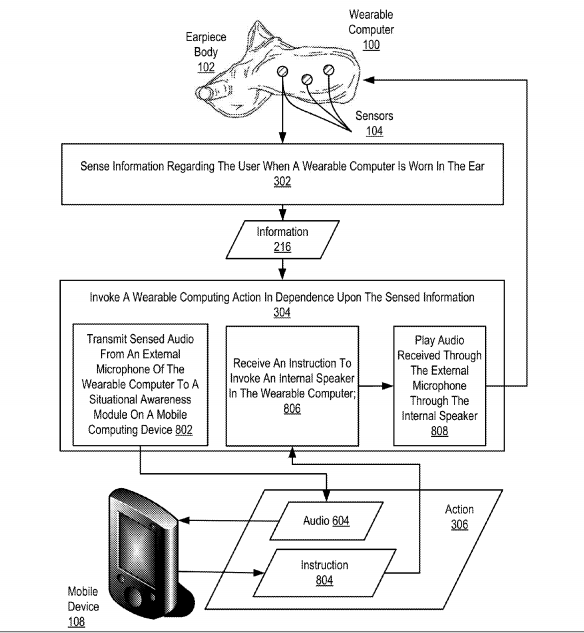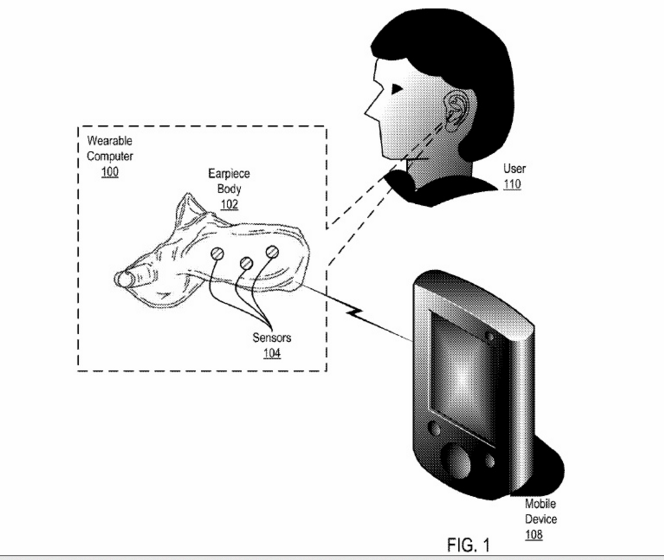 aNewDomain — Google is working on commercializing a high-end, custom fit in-ear computer as part of its secretive new Project Aura division, sources close to the company tell aNewDomain.
aNewDomain — Google is working on commercializing a high-end, custom fit in-ear computer as part of its secretive new Project Aura division, sources close to the company tell aNewDomain.
Project Aura, the same Google wearables division that’s reportedly readying a lighter, more powerful Google Glass product for vertical customers, is planning various hearable devices to work in conjunction with other wearables and for standalone use, they add.
FCC documents, Google patents and patent applications from Google partners United Sciences, LLC and the Georgia Institute of Technologies bear this out. Take a look.
A custom-fit, in-ear computer for enterprise … and another for fitness buffs
At Georgia Tech laboratories in Atlanta, Google Glass tech lead and wearable pioneer Thad Starner is working with university researchers and United Sciences inventors to adapt their invention of a custom-fit, in-ear computer for commercial us e, sources say. They add that the resulting hearable (or hearables) could be unveiled as soon as the next Google I/O developer’s conference in June, along with the next Google Glass version (FCC id: A4R-GG1) as revealed in FCC documents a few weeks ago, a fitness and music-playing in-ear wearable for consumers and, possibly, its upcoming VR headset.
e, sources say. They add that the resulting hearable (or hearables) could be unveiled as soon as the next Google I/O developer’s conference in June, along with the next Google Glass version (FCC id: A4R-GG1) as revealed in FCC documents a few weeks ago, a fitness and music-playing in-ear wearable for consumers and, possibly, its upcoming VR headset.
The product will be based closely on the Georgia Tech/United Sciences invention detailed in the below patent application, sources add, which was published last June by the U.S. Patent & Trademark Office.
The main difference between the planned Google hearable based on the United Sciences design and, say, a hearable like the one Bragi plans has to do with the custom fit technology Human Sciences brings to the table, sources suggest.
Using what the company describes as a quick, 3D ear scanning process, the device would precisely fit the ear canal of its wearer, an innovation that promises to use safer volume levels, lower-power, more accurate biometric sensing for fitness and planned medical applications.
In the application, United Sciences describes its wearable in-ear computer as:
… a wearable computer including an earpiece body manufactured from an image of a user’s ear, the image created from a three dimensional (‘3D’) optical scan of a user’s ear; one or more sensors configured to sense information regarding the user when the wearable computer is worn in the ear; a computer processor and memory operatively coupled to the computer processor; and a wearable computing module stored in memory, the wearable computing module comprising a module of automated computing machinery configured to receive the sensed information and invoke a wearable computing action in dependence upon the sensed information …”
Customizing an in-ear device so it fits tightly into an ear canal amounts to a dramatically improved audio experience, United Sciences execs told reporters attending CES 2016 this year.
Check out the patent application below.
United Sciences In-Ear PC Patent App US 2015168996a1
In addition to the patent application above and its intellectual property around its 3D ear scanner, United Sciences also has an application in the USPTO system describing a user authentication method for its custom earpiece. In theory, this would allow the owner of a Google hearable using the technology to ensure that no one else could put on the system and be able to access personal or company data.
personal or company data.
For aNewDomain, I’m Gina Smith.
Below, check out the FCC docs Google filed for a faster, foldable version of Google Glass, dubbed Google Glass 2 by the popular press.
First, the images. Scroll below the fold to check out the user manual for GG1 …
Google Glass 2 FCC External Images AWR-GG1
Here’s the certification test report on file with the FCC for the same product, which industry pundits nickname “Google Glass 2.”













